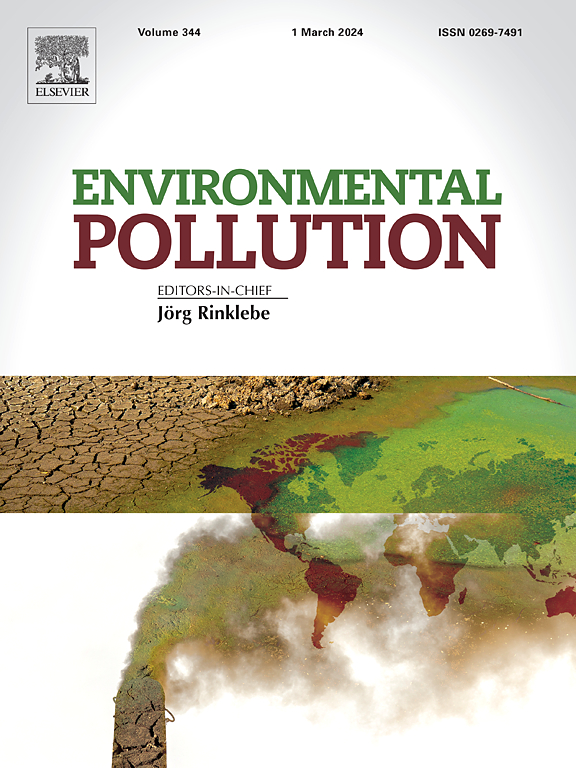Acute and partial life-cycle toxicity of a tri-polymer blend of microplastics in the copepod Acartia tonsa
IF 7.6
2区 环境科学与生态学
Q1 ENVIRONMENTAL SCIENCES
引用次数: 0
Abstract
Microplastics are a prolific environmental contaminant that pose a risk to marine organisms. Ecotoxicological studies have identified microplastics can cause sub-lethal harm to aquatic biota. However, prior studies often lack comparability and environmental relevance, for example focussing upon monodisperse beads at extremely high concentrations. Copepods are keystone marine taxa that play vital roles in the marine food web and biogeochemical cycling. In this study, we adapted ISO methods to conduct acute and partial life-cycle toxicity tests exposing adult and juvenile life stages of the copepod Acartia tonsa to a fully characterised tri-polymer microplastic blend comprising cryoground polyethylene, polypropylene, and nylon particles (5–100 μm) at concentrations ranging 0–1000 μg L−1. The tests considered the toxicity of microplastics on a wide number of endpoints including adult survival, algal ingestion rates, egg production and size, larval development ratio and juvenile survival. Mortality, egg size and larval development ratio proved to be the most sensitive endpoints. The tri-polymer blend had an LC5072h value of 182 μg L−1 providing a baseline for future toxicity testing using this method.


微塑料三聚合物混合物对桡足类扁形目动物的急性毒性和部分生命周期毒性
本文章由计算机程序翻译,如有差异,请以英文原文为准。
求助全文
约1分钟内获得全文
求助全文
来源期刊

Environmental Pollution
环境科学-环境科学
CiteScore
16.00
自引率
6.70%
发文量
2082
审稿时长
2.9 months
期刊介绍:
Environmental Pollution is an international peer-reviewed journal that publishes high-quality research papers and review articles covering all aspects of environmental pollution and its impacts on ecosystems and human health.
Subject areas include, but are not limited to:
• Sources and occurrences of pollutants that are clearly defined and measured in environmental compartments, food and food-related items, and human bodies;
• Interlinks between contaminant exposure and biological, ecological, and human health effects, including those of climate change;
• Contaminants of emerging concerns (including but not limited to antibiotic resistant microorganisms or genes, microplastics/nanoplastics, electronic wastes, light, and noise) and/or their biological, ecological, or human health effects;
• Laboratory and field studies on the remediation/mitigation of environmental pollution via new techniques and with clear links to biological, ecological, or human health effects;
• Modeling of pollution processes, patterns, or trends that is of clear environmental and/or human health interest;
• New techniques that measure and examine environmental occurrences, transport, behavior, and effects of pollutants within the environment or the laboratory, provided that they can be clearly used to address problems within regional or global environmental compartments.
 求助内容:
求助内容: 应助结果提醒方式:
应助结果提醒方式:


